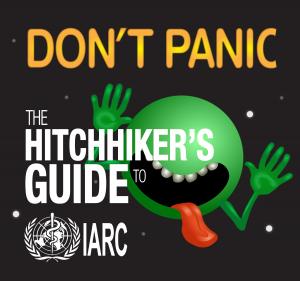Improved approach to cancer risk identification ensures more realistic assessments
Cancer and toxicology experts challenge IARC Monographs to update evaluation approaches for better public health outcomes, reduced spread of misleading fears
The latest International Association for Research on Cancer (IARC) Monograph Program report on cancer hazards associated with firefighting work, which blanketly states, “occupational exposure as a firefighter causes cancer,” has provided another example of the need for an improved way to evaluate real-world cancer exposure risks.
According to U.S. National Fire Protection Association research, firefighters have as much as a 9 percent higher rate of cancer diagnoses than the general population, but clearly not all in the profession get cancer. IARC’s language and “hazard” only approach, which does not evaluate dose or exposure elements, has frequently been questioned for pushing policy makers to act on misleading or non-existent threats and promulgating scores of multi-billion-dollar lawsuits.
“Should we protect firefighters from specific, identifiable, and avoidable risks in their profession? Of course,” notes Professor Samuel Cohen, M.D., PhD, a University of Nebraska Medical Center cancer expert. “But should we ban all firefighting activities because IARC’s correlation misleadingly states firefighting causes cancer? Of course not.”
According to research published by Cohen and an international team of scientists, the results for those relying on IARC Monographs have been net-negative impacts on public health while failing to advance the goal of reducing real exposure risks to actual carcinogens. In fact, many health regulators around the world frequently disagree with and discount IARC assessments when evaluating carcinogenicity of products ranging from pesticides and nutritional supplements to coffee and the materials used in firefighting. Even IARC’s parent, the World Health Organization, has disagreed with their approach and findings. But IARC’s misleading and ineffective hazard assessments remain.
A group of renowned cancer and toxicology experts have published more than six peer-reviewed analyses on this issue.
Their latest assessment published in the Archives of Toxicology provides the elements for a more rational way to evaluate and rank cancer risks. Their assessment criteria and rankings account for exposure and prioritize real over theoretical risks. The premise of the assessment has been highlighted in an essay entitled “The Hitchhiker’s Guide to an IARC Monograph Conclusion: Don’t Panic” published in The European Scientist includes references and links to the authors’ peer reviewed research articles.
Summary highlights of the full essay follows:
• The IARC Monograph program consistently finds just about everything can cause cancer. Of the 1,000 or so substances and life-style hazards they have looked at, they have only found one (1) that definitely did not cause cancer.
• If the answer to the question, “does a substance cause cancer?” is always “yes,” what practical value does it have? How are we to respond to these pronouncements in an appropriate way? Stop using my cell phone? Quit my job? Give up meat? Panic?
• The IARC Monograph program’s consistent, impractical answer reminds us of Douglas Adams’ 1979 classic, The Hitchhiker’s Guide to the Galaxy, wherein the supercomputer, Deep Thought, declared that the ultimate answer to Life, The Universe, and Everything is “42”. Unfortunately, no one could remember what the question was – or should be.
• IARC needs to go beyond the simplistic question, “does a substance cause cancer?”, and ask under what circumstances would a substance cause cancer so we can take appropriate action. They should ask questions like: at what dose does it cause cancer (in other words, how potent is it); is anyone, ever, likely to be exposed at that dose; is it even possible, outside a laboratory setting, to consume or be exposed to enough of the substance to cause cancer? They might ask a few other questions as well – questions every other regulatory agency in the world asks as a matter of course – such as “what is the mode of action?” (i.e., how does it cause cancer), and does that same mode of action apply to humans, not just lab animals?
• If the answer to all these questions suggests that a substance poses a danger, then appropriate actions, from outright bans to limitations on use, can be taken to ensure safety.
• The IARC Monograph program’s recent blanket statement that firefighting causes cancer sounds like a “42” answer, i.e. “Yes”. But under what circumstances? What actions could be taken?
• Asking the wrong questions can lead to an answer equivalent to Deep Thought’s “42” and the elimination of useful or even life-saving substances or professions. Nevertheless, whatever the answer to the question asked, even if it is to the wrong question, remember: “Don’t Panic.”
• The IARC Monograph program needs to have a conversation about making its pronouncements more useful. The upcoming IARC Scientific Workshop on Bias Assessment in Cancer Hazard Identification in October 2022 would be a good place to start this conversation.
See article published 6 October 2022 in The European Scientist: https://www.europeanscientist.com/en/features/the-hitchhikers-guide-to-an-iarc-monograph-conclusion-dont-panic/
Samuel M. Cohen
University of Nebraska Medical Center
+1 402-559-6388
email us here
Legal Disclaimer:
EIN Presswire provides this news content "as is" without warranty of any kind. We do not accept any responsibility or liability for the accuracy, content, images, videos, licenses, completeness, legality, or reliability of the information contained in this article. If you have any complaints or copyright issues related to this article, kindly contact the author above.

